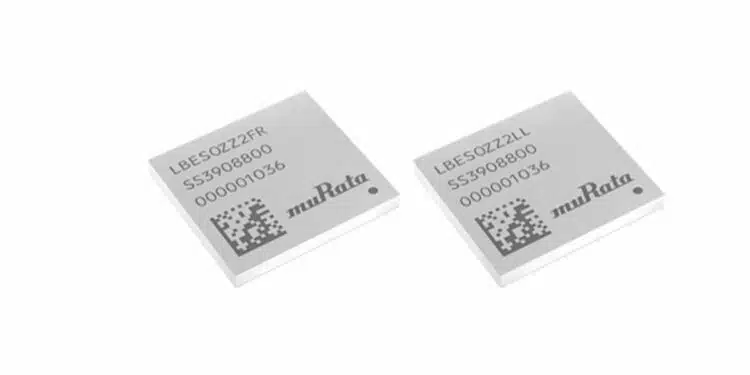Murata Manufacturing Co., Ltd is expanding its innovative wireless communication module lineup by introducing the new Type 2FR/2FP and Type 2KL/2LL modules.
Designed to support the next generation of wireless connectivity across smart home, smart building, and industrial IoT applications, these compact devices feature tri-radio communication including dual-band Wi-Fi®, Bluetooth® Low Energy, and Thread, with Matter™ provisioning.
2FR/2FP: World’s Smallest Tri-Radio Thread Module
Across both smart homes and industrial IoT applications, the market calls for low-cost and highly integrated solutions that can help to remove interconnectivity barriers without introducing security concerns.
The Type 2FR/2FP family stands out as the world’s smallest devices to combine a Micro Controller Unit (MCU) with Wi-Fi 6, Bluetooth® 5.4, and 802.15.4 OpenThread communication in a single module, measuring just 12.0mm x 11.0mm x 1.5mm. Leveraging a high-performance 260 MHz Arm® Cortex®-M33 MCU, these modules can function either as a co-processor or a standalone device capable of running all network stacks and user applications natively.
The 2FR/2FP family provides reliable communication, including compatibility with the Matter ecosystem — the unified connectivity standard developed by the Connectivity Standards Alliance (CSA). Security is ensured through communication that meets the latest cybersecurity standards (SESIP3 and PSA3), eliminating the need for a separate security integrated circuit (IC). 2FR/2FP is the best solution to meet the requirements of upcoming cyber security regulations such as EU Cyber Resilience Act.
The devices feature fully certified operation, external antenna support, and a rich peripheral interface. In IoT designs, the Type 2FR/2FP helps to reduce Bill of Material (BoM) component count and costs, with the low-power operation guaranteeing extended battery life. These factors make the 2FR/2FP family an ideal option for portable and highly integrated IoT solutions in applications such as smart homes, smart buildings, HVAC, smart energy, smart security, industrial automation and healthcare/medical devices.
Type 2FR/2FP Evaluation Board Sample is available in CQ1 2025 (distributors: Future, Arrow, Avnet, Digi-Key, Mouser).
2KL/2LL: Cost-Effective Wireless Solutions for Smart IoT Applications
In addition to the 2FR/2FP family, Murata has unveiled the new Type 2KL/2LL modules. Designed for smart micro systems with mid to high-performance processors running Linux or a real time operating system (RTOS), the 2KL/2LL modules enable reliable and energy efficient tri-radio communication – Wi-Fi 6, Bluetooth® 5.4, and Thread, with Matter support.
With the advanced NXP IW610 chipset, the Type 2KL/2LL can seamlessly handle network stacks, applications, and comes with crucial security features, peripherals, and certified radio performance for North America and Japan. The Type 2KL/2LL family is engineered for applications that demand the advanced capabilities of Wi-Fi 6 but encounter financial constraints with existing Wi-Fi 6 modules. The feature set and tri-radio operation are suited to IoT deployments, such as imaging devices, connected smart homes, smart accessories, smart energy solutions, and building automation, as well as business and industrial applications.
Murata’s patented SR molding technology underpins both the Type 2FR/2FP and Type 2KL/2LL families, ensuring the modules feature a highly integrated and compact design.
Type 2KL/2LL Evaluation Board Sample is available in CQ1 2025 (distributors: Future, Arrow, Avnet, Digi-Key, Mouser).
“Once again, our engineering teams have challenged the existing benchmarks for communication module performance, and the Type 2FR/2FP and Type 2KL/2LL families,” said Masatomo Hashimoto, Director of Communication & Sensor Business Unit at Murata. “With these new product lines, engineers are free to support the latest communication protocols in their designs, including the rapidly growing Matter ecosystem, without compromising costs, packaging or energy efficiency.”





























